The Sirens in painting
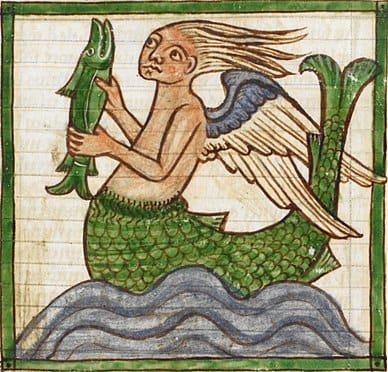
Over the centuries the Sirens have resisted easy definition. In the Odyssey, Book 12, when Circe is warning Odysseus about them, they are just creatures with a bewitching song. He has himself bound to the mast while all his crew have their ears blocked, and he gets past them unscathed.

Siren derives from the Greek for “entangler” and their song lures sailors to their doom, by drowning them when their ships are wrecked on reefs and shoals, or perhaps when they struggle ashore to die of hunger. Their meadow by the sea is surrounded by the bones of their victims and to my mind these early stories were about sailors and prostitution.
Circe may have been misinformed, of course, so other Greek writers and artists felt obliged to make improvements. This led to an estimate of their numbers (two, three, many), complicated backstories and family trees, the appearance of lyres and, most radically, a metamorphosis into dive-bombing flying bird-women like the ones on the vase shown below, from around 480-470 BC, which is in the British Museum. The dubious idea here is that if Odysseus resisted their charms, then they had to die by plunging into the ocean.
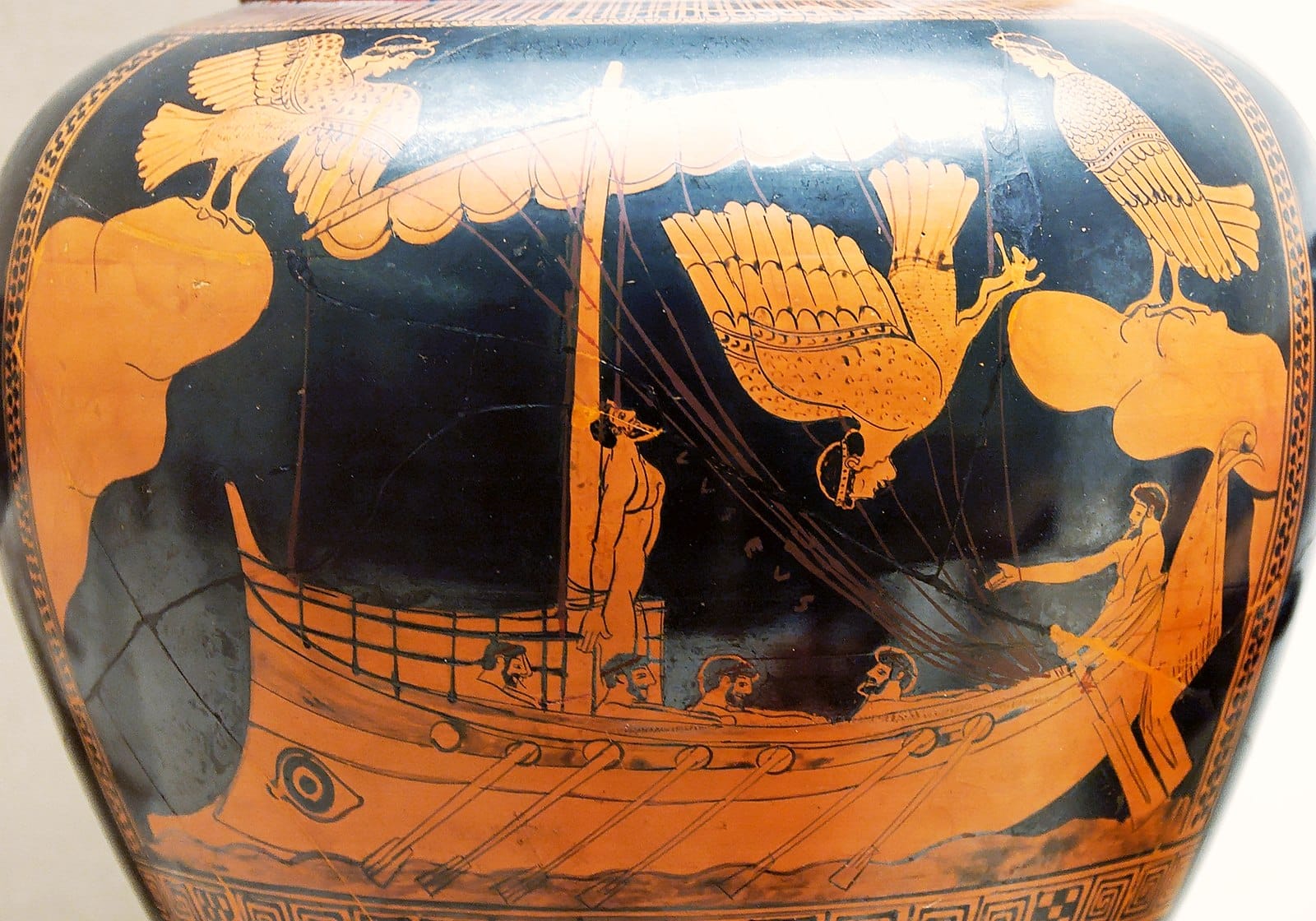
It would seem that at some point the original Sirens became fused with the Harpies. These bird-women were known as "snatchers" of food and may have been based on beggar women.
By the time of the Romans, Saint Augustine and Dante, the Sirens had become sea creatures, part-mermaids. Why the Romans preferred mermaids over birds is not really well understood, but this view persisted through the Middle Ages and beyond (top photo).
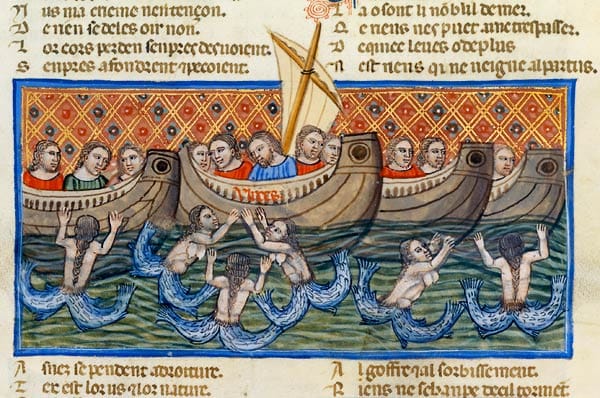
Above is a miniature illustrating Benoît de Sainte Maure's poem Le Roman de Troie (The Romance of Troy). The original poem was written in 1155 and 1160 and possibly dedicated to Eleanor of Aquitaine. This miniature, with its mermaids, is from a bit later, around 1340-1350 and now Christ has replaced Odysseus and the mast is a cross.
In the 19th century, two traditions competed with each other. When John William Waterhouse painted Ulysses and the Sirens in 1891 (up above), he went with a cluster of airborne pre-Raphaelite bird-women hovering around Odysseus like JK Rowling's Dementors. When Herbert James Draper tackled them in 1909 (also titled Ulysses and the Sirens), he mixes up mermaids and regular women as though there is no difference, which seems a bit odd.
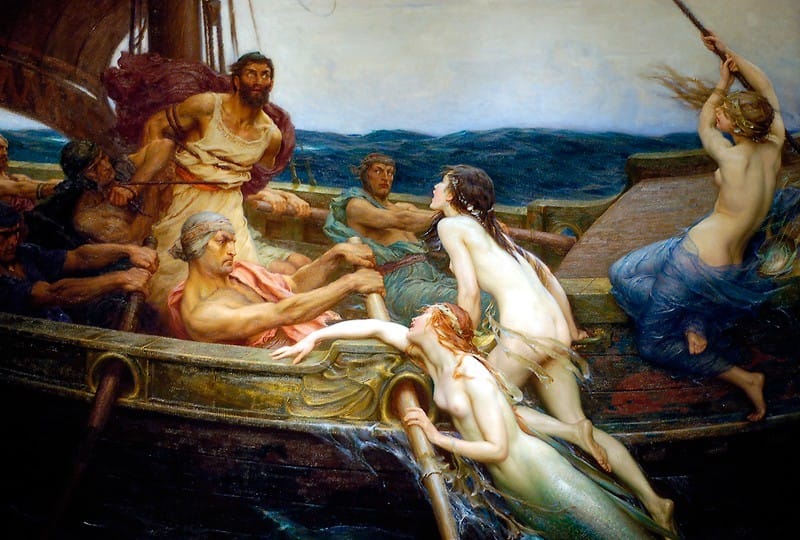
The oddest painting may well be this one below, from Swiss Symbolist painter Arnold Böcklin in 1875, where he has dispensed with the wings but kept the chicken legs. Similar images appear in Roman mosaic art.
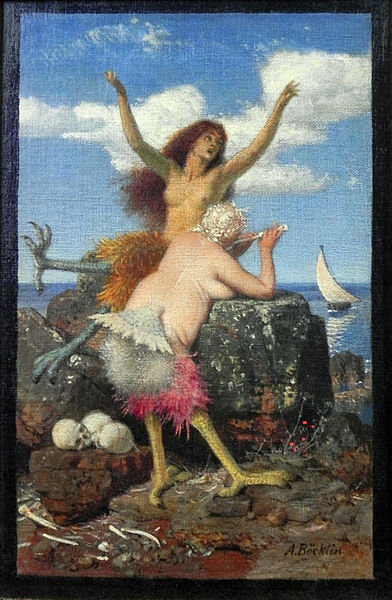
Finally, could it be that Circe warns Odysseus about the Sirens because they will tell him things he is not supposed to know, the secret knowledge of the gods? If he learns anything he certainly doesn't tell us what it is.
